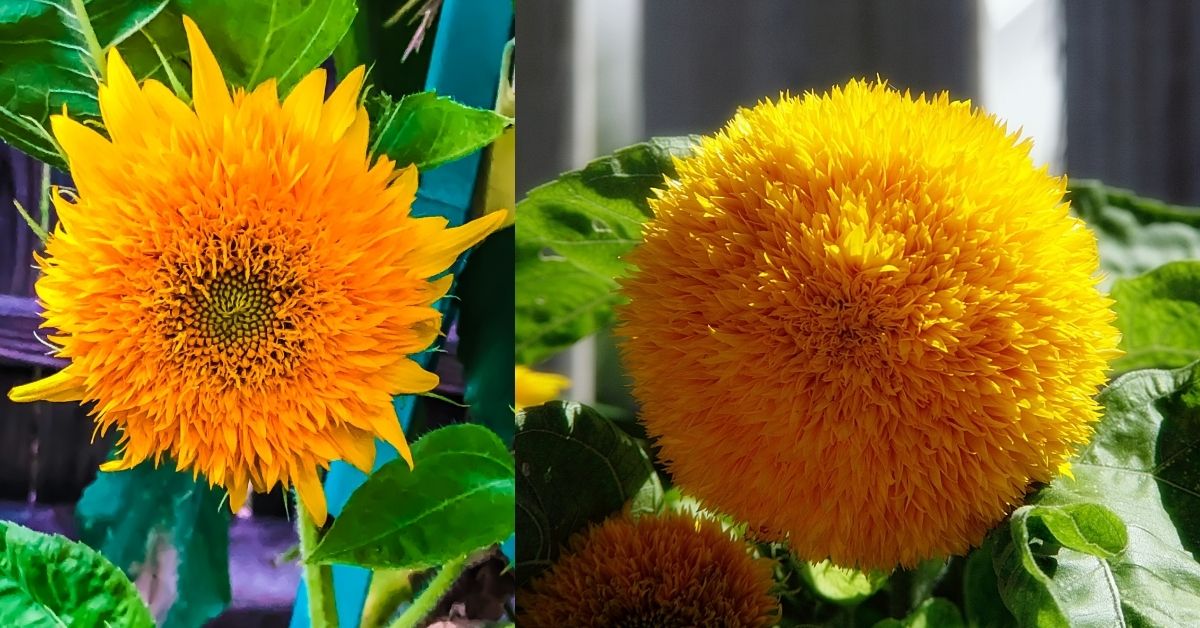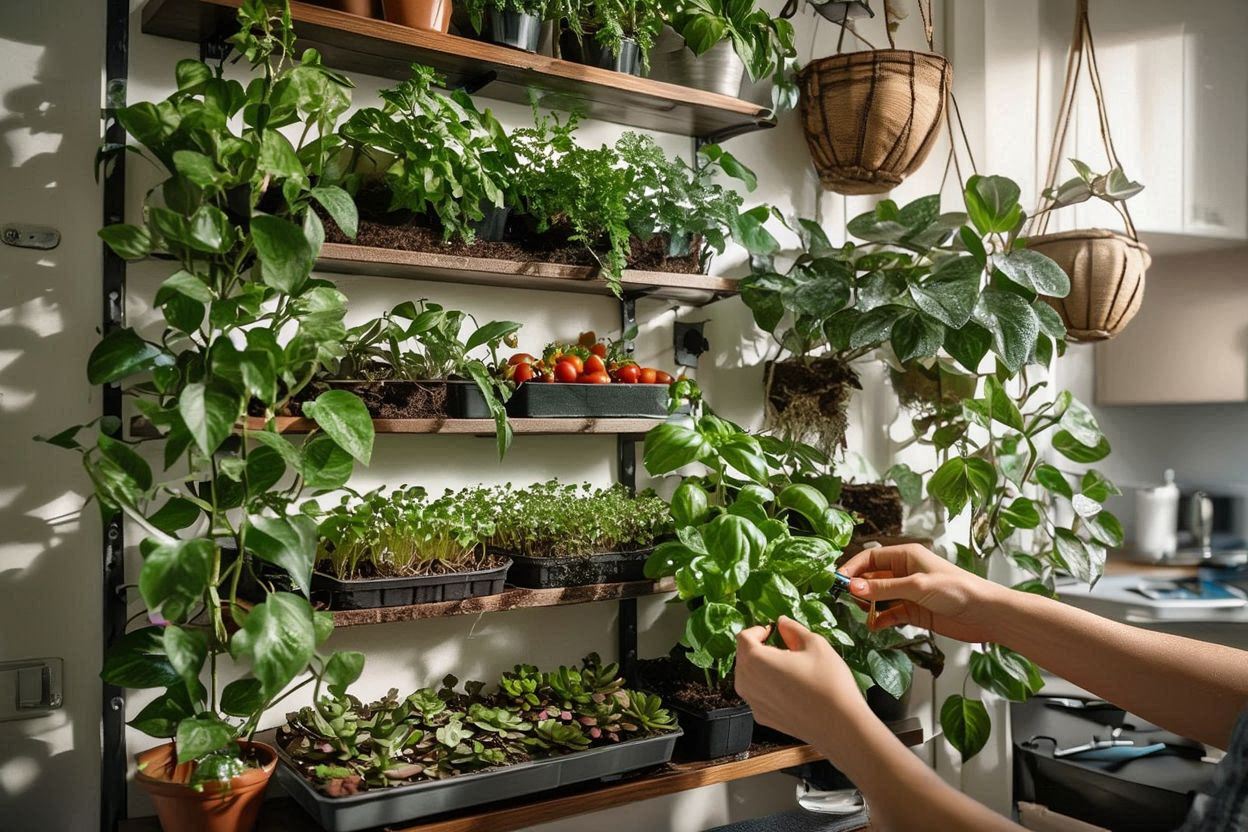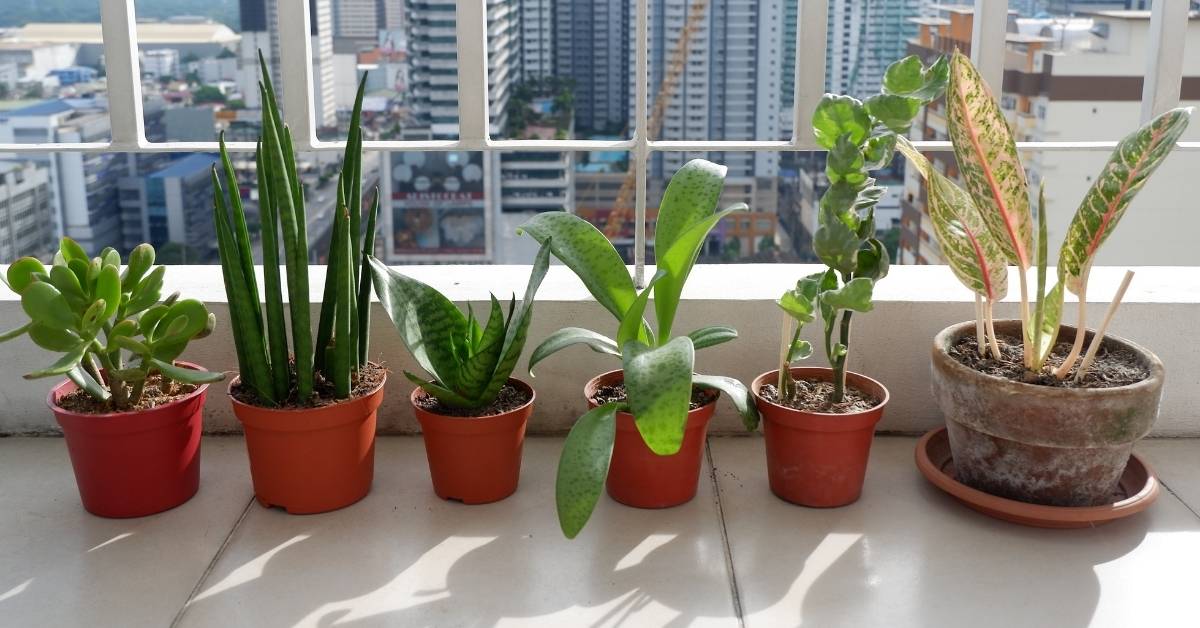Sunflowers (Helianthus annuus L.) are a beautiful addition to any garden. However, they can also be grown indoors, given the right conditions. They will brighten any home and bring a sprinkle of summer to any room in your house. They can also produce a head full of tasty seeds.
As they are ”easy to grow annual”, they can be replanted every year using the seeds from the previous year’s harvest. Because of their nutritional value, indoor sunflowers are widely favored by organic food lovers.
Here we explain all about growing sunflowers indoors.
How to Start Growing Sunflower Indoors?

The first step in growing sunflowers indoors is deciding which variety suits your needs the best. As not all varieties produce seeds, you may have to determine if you want to grow them for their beautiful appearance only or for their nutritional attributes.
Many avid gardeners select the dwarf kind of sunflowers because of their compacted size and ease of care. The dwarf variety typically grows to less than two feet tall and produces bright yellow flowers with dark centers. Some of these types of sunflowers produce edible seeds. They are a natural source of Vitamin E and B and are often used in salads.
Types of Indoor Sunflowers
Many flower lovers prefer the dwarf varieties of indoor sunflowers due to the ease of cultivation and care. The most common types include the following:
- Teddy Bear – Produces 1-foot plants with orange and yellow petals. It begins to bloom with one 4-inch main flower and expands with additional 4-6 surrounding flower heads.
- Jade – The tallest of the dwarf variety, the Jade can reach the height of 4 feet. It blooms quickly with greenish petals and a cream-colored center. They are typically used for flower arrangements as they do not produce edible seeds.
- Big Smile – Grows up to eight inches in height, producing a single flower with yellow petals and a black center.
- Taiyo Sunflower – Helianthus annuus ‘Taiyo’ (Common Sunflower), a Japanese cultivar, is a vigorous annual with broad, pointed, dark-green leaves and brilliant blooms. It produces big, solitary blooming in the summer that may be up to 10 in. (25 cm) wide and have beautiful yellow petals around a sizable dark chocolate center disk.
- Pacino – Reaches the height of two feet and produces a cluster of flowers with yellow petals and a yellow center.
- Valentine– This branching variety has pale yellow petals and a light center. It may grow up to 3 feet tall.
- Strawberry Blonde – Make sure you choose the proper location so that Strawberry Blonde won’t shadow other sun-loving plants since it grows to a height of 6 feet.
- Moulin Rouge Sunflower – Moulin Rouge boasts solitary, rich burgundy-red blooms with dark chocolate centers. It is a strong-branching variety with minimal pollen for prolonged vase life. These 4″ to 6″ wide blooms are considered medium-sized. From 5′ to 7′ in height.
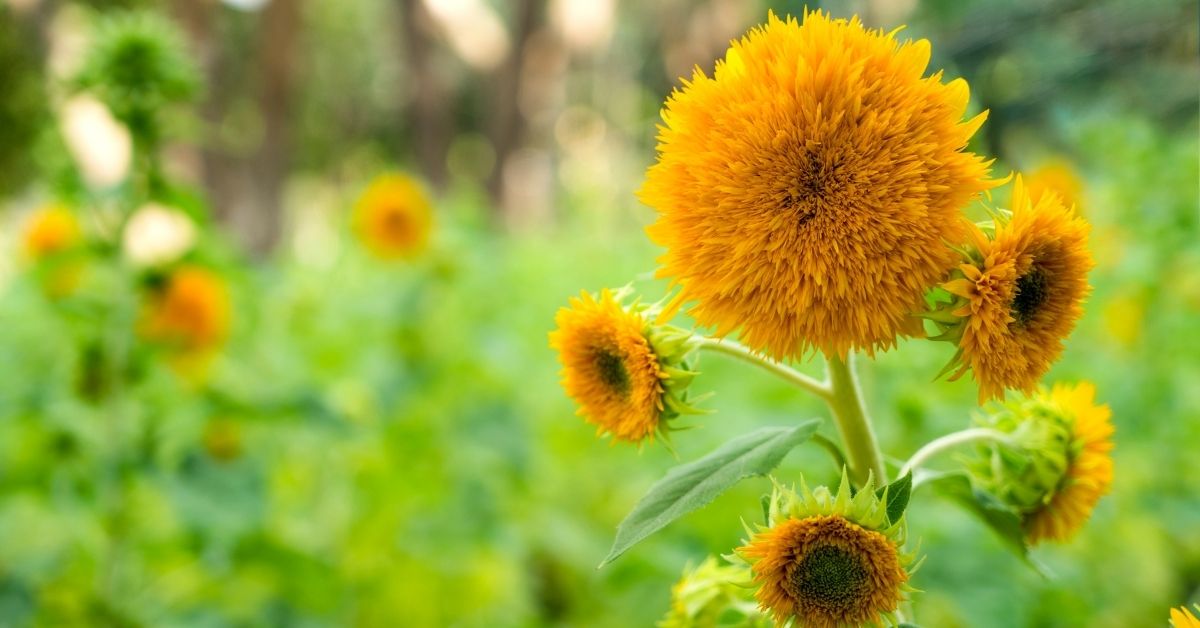
The sunflower seeds need plenty of warmth and sunshine to germinate. The temperature of the soil must be maintained at 70-75 degrees during the germination period, and it should never be allowed to fall under 65 degrees.
They should be planted in seedling trays and placed in the sunniest spot in your home. You should see the first leaves appear in about one week. Growth is typically rapid afterward if the container is placed in front of a south-facing window.
If the amount of light is insufficient, it can be supplemented by fluorescent lighting specifically designed for seed germination. It is important not to change the location until the plant is well established, at which point, it can be replanted into a bigger pot with a wide bottom.
If the new plant becomes too leggy with poorly developed leaves, it may have to be discarded as it will never grow to its proper size or produce any seeds. It is also a sign that the plant is too cold and has reached the stage of its collapse.
Transplanting the Sunflowers Outdoors
Many people choose to transplant the taller varieties of sunflowers outdoors once the weather becomes warm enough for the plant to flourish. The seeds typically attract wildlife such as squirrels and birds. If the plant remains in the pot, the top layer of soil can be protected by wire mesh.
Suppose the sunflower is transplanted directly into the ground soil. In that case, the top layer can be covered with moss or gravel to minimize the invasion of wild animals.
Sunflowers also do not thrive in windy locations. They prefer calm and bright locations illuminated by the sun throughout the day. They blossom vigorously when planted against the fence or when supported by stakes. Sunflowers are “social” plants and like to be planted within close proximity to each other. They can later be thinned out if they become too crowded.
Growing Period
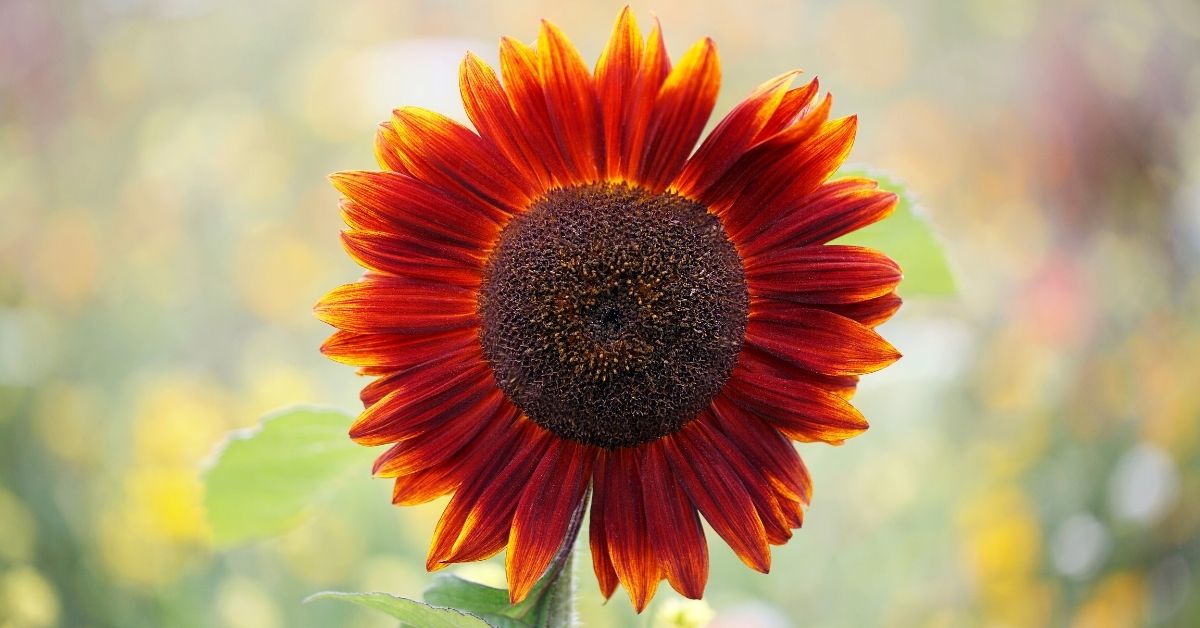
Once the seeds or seedlings are planted, the sunflowers will have to be watered every 1-2 weeks, letting the soil dry in between the watering. In nature, ordinary rainfalls are sufficient enough to help the sunflowers develop to their natural height and shape. Indoors, they have to be watered regularly, mimicking their natural environment.
When the plant reaches the height of two feet, it should be supported by a stake anchored to a structure outside the container. The stakes should never be placed directly into the pot as they may damage the root system. In addition, by this growth stage, the sunflower heads become massive and too heavy for the stem to hold its weight.
For the plant to keep growing, it is imperative to provide it with additional support. If the plant is grown only for its flowers, the tips can be periodically pinched back to encourage bushier growth and the rapid explosion of additional flower heads.
Pot and Containers
The seeds or seedlings best germinate in small 12-16 inch pots. Sunflowers prefer the stability of the same container and soil mixed with organic matter, and they do not like to be removed from one location to another. It is recommended to plant one seed per pot.
When the plant matures, it can be transferred once during the season to a bigger container with plenty of room for roots to spread. The plant will have to be watered more frequently as sunflowers are thirsty feeders and need additional nourishment if grown indoors.
Sunflower Diseases and Pests
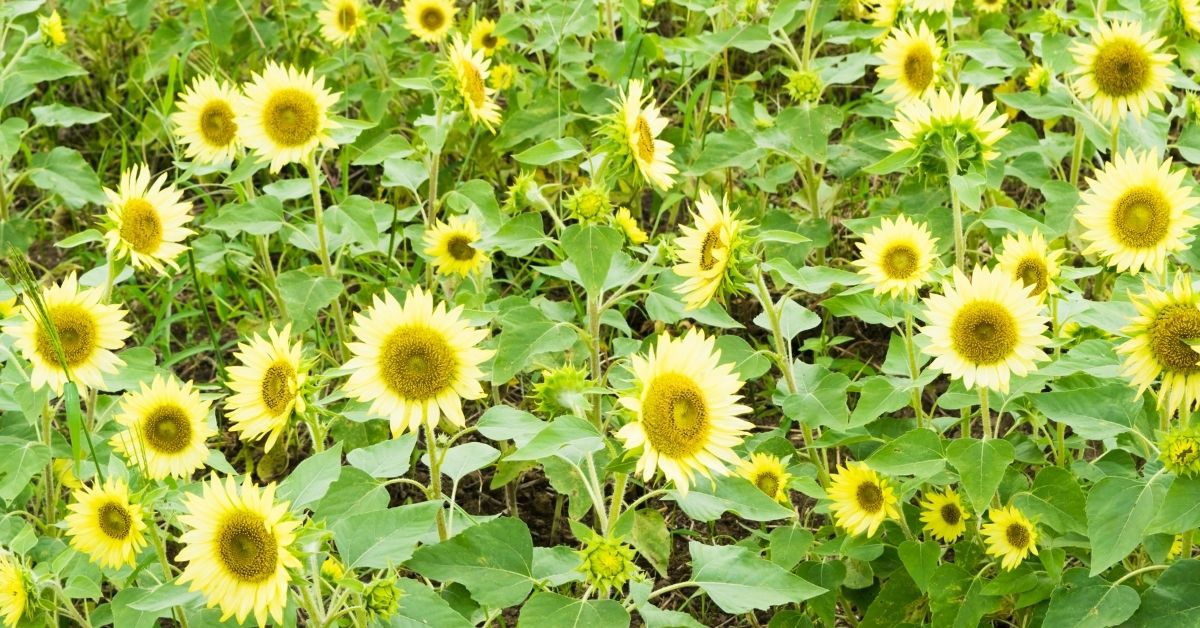
Naturally grown sunflowers are prone to acquiring several plant diseases. When grown outdoors, they fall prey to caterpillars and grasshoppers. Their bright yellow petals captivate the attention of many types of worms as well as birds.
However, indoors, the danger of becoming infected is minimized, and indoor sunflowers typically do not need special attention or pesticides, making them safe for all household occupants, including children and pets. Keeping your sunflower in a sunny location throughout the season will also avoid mildew or fungus growth.
End of Season
At the end of the summer, the petals begin to fall, and the plant starts to wilt. If you grow indoor sunflowers for their seeds, the best method for harvesting them is to let the plant die on its own. As this technique is not the most attractive, the plant can be moved to another location as long as it stays warm until the seeds reach their edible size.
The stem can also be cut and hung upside down for better ventilation. Once the plant is harvested, some of the seeds can be retained to be replanted the following year. The remainder of the plant should be discarded as it will not re-grow on its own again.
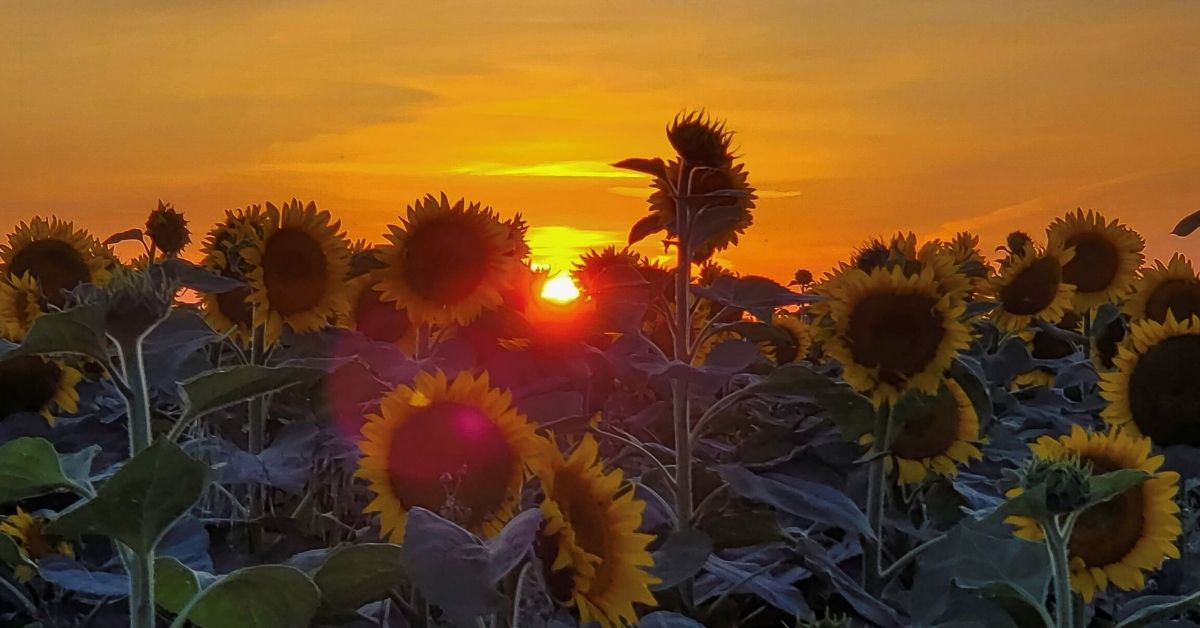
Summary of the Preferred Conditions for Indoor-grown Sunflowers
- Plant the seeds or seedlings in a well-fertilized soil that has been cultivated about 12 inches deep. Incorporate organic matter such as compost.
- Water regularly throughout the growing season. Cover the top layer of soil with mulch or gravel, not touching the stem and allowing proper ventilation.
- Place the containers and pots in a sunny area of the house facing the south. Minimize transfer of the pots from one location to another.
- If growing more than one sunflower, place the containers closely together and set them apart as the plants become bushier.
- Weeding and pest control are not necessary when growing indoor sunflowers.
- Apply mild fertilizer around the base of the plant throughout the season in regular 2-3 week intervals to promote healthy growth.
- Stabilize and support the plant once it reaches the height of two feet. Place the stakes behind the plant and secure them to an outside-the-pot structure such as the wall or another planter.
Sunflowers can withstand long periods of drought but grow best when watered and maintained regularly. They make a wonderful addition to other plants in your house and provide plenty of shaded protection for low-growing plants in your house.
They generally serve as a background to other container plants and flower arrangements, and they thrive in the company of other plants.
How to store sunflower seeds
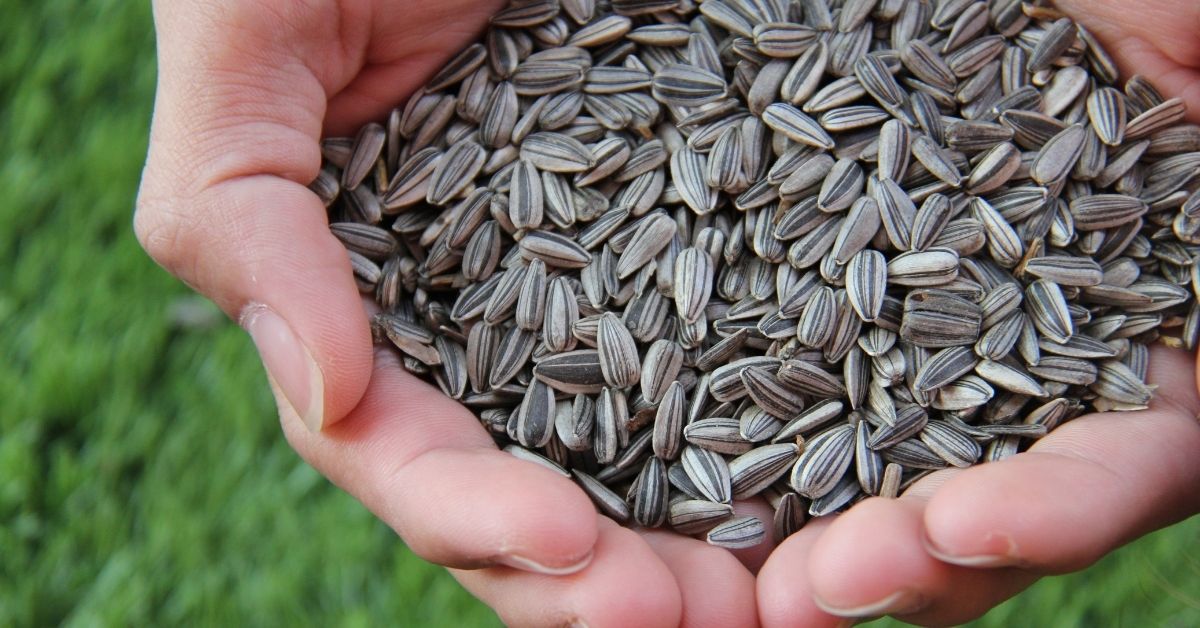
The seeds can be stored in air-tight containers during the winter and used for consumption or replanted indoors or outdoors the following season. The sunflowers originated in the Western United States. They now can be grown and cultivated in all temperature zones throughout USA and Canada.
FAQ
Are sunflowers easy to grow from seeds?
Yes! Although you may purchase starting plants from nurseries and home improvement stores, it is simplest to grow sunflowers from seed that is placed straight into the ground. You can cultivate more sunflower kinds if you start with seeds. Sunflowers may also be grown from seed quite easily.
How to grow sunflowers from seeds indoors?
Three seeds should be planted in each 3- to 4-inch peat pot to begin sunflowers indoors. The optimum drainage will be provided by a soilless planting medium. Germination indoors typically takes 6 to 10 days. By sowing seeds every two weeks, you may have constant blooming all year long.
How long does it take to fully grow a sunflower from seed?
There are various varieties of sunflowers, and each one will grow at a different rate. On average, though, it takes between 80 and 120 days for a plant to mature and develop seeds.
How do you grow sunflower seeds in pots?
Plant seeds straight into pots filled with well-moisturized, high-quality potting mix, 4-5 inches apart, and 1/2 inch deep. It takes around 8 to 10 days for it to germinate. When seedlings reach a height of a few inches, transplant them into bigger pots that are at least 12 to 18 inches deep, being careful to space them out evenly.
Should I soak sunflower seeds before planting?
Before planting, soaking seeds helps to weaken the seed’s natural defenses against what it anticipates from Mother Nature, which then enables it to germinate more quickly. The fact that Mother Nature aggressively fights against seeds while simultaneously providing them with an internal clock that tells them when to develop is another factor.
When should I start my sunflowers indoors?
This will be three weeks after the last frost in the majority of places. Sunflowers may be planted inside to jumpstart the growth season. After your final spring frost, just slip the seeds into peat pots.
How often should I water sunflower seeds?
Every day, water the seeds regularly. While the seeds are germination, give your sunflowers at least 2 gallons (7.6 L) of water every week. Lack of water at these early stages will result in sunflowers with thin, frail stems that are unable to support the heavy flower head erect.
Do sunflowers come back every year?
Sunflowers may be either annual, in which case they need to be replanted each year, or perennials, in which case they will come back each year from the same plant. It is not difficult to recognize the difference between the two types of sunflowers if you are familiar with the process.
How do you keep sunflowers alive indoors?
To maintain the freshness and vitality of your flowers’ appearance, maintain the water with either one teaspoon of sugar, two teaspoons of lemon juice, or one tablespoon of vinegar. Sunflowers will look healthier for longer if you do this. Be sure that your sunflowers are not placed in an area where they will be subjected to heat, direct sunshine, or drafts.
Why didn’t my sunflower seeds sprout?
The following are the key reasons why germination did not take place: Seeds are ingested by a variety of organisms, including birds, mice, voles, and wireworms. Examine the area to determine whether the seed has fallen out of the soil. If they are planted too deeply, if they get too much water, or if the weather is too cold, our untreated seeds may just rot.
